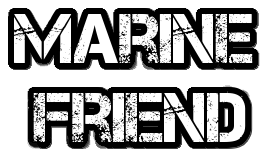MARINE FACTS
What is Merchant Ship?

As a Merchant Marine Officer(MERCHANT SHIP), you will work on the many types of ships that make up the commercial shipping industry in the UK. The merchant fleet consists of civilian vessels such as oil tankers and merchant ships that import and export goods to other countries. Merchant fleet is a collective term for commercial shipping that includes various cruise ships, oil tankers, and merchant ships of all kinds.
The term merchant marine also refers to the personnel who operate such ships, as opposed to the personnel of warships. A Merchant Seaman serves on board a merchant ship in the Merchant Marine after receiving training and certification from the United States Coast Guard. The Merchant Marine, the merchant ships of the nation, privately or publicly owned.
King George V gave British merchant ships the title “merchant ship” after their service in World War I; a number of other countries have since adopted the name or a similar “merchant ship”. During World War II, many ships of the British Merchant Marine joined the Allied merchant fleet and its convoys as part of Poland’s contribution to World War II. Merchant sailors often found themselves on the seafront during World War II.
Many merchant seamen came from parts of the British Empire, such as India, Hong Kong, and West African countries. New Zealand-owned ships were involved in trade with Great Britain (84% of New Zealand merchant marine exports in 1939 and most New Zealand sailors served on British merchant ships. “The wartime merchant ship was neither an army nor a complete unity”, but “a collection of various corporate and private vessels”.

At the outbreak of the war, British merchant ships were placed under the control of the Department of Shipping, which was later incorporated into the Department of War Transport. Britain relied on merchant ships to import food, equipment, and raw materials in peacetime but also needed shipping in wartime to transport troops abroad to fight and deliver supplies to equip and support these warriors.
The Merchant Shipping Act 1835 and its successors were intended to create central registers of all sailors who could be called to support the Royal Navy in wartime. The convoy system provided groups of merchant ships with an escort of one or more warships on their voyage and was based on a system proven effective in the First World War. By carrying out the trade of other countries across the seas, the merchant fleet contributes to the foreign exchange income of their countries, facilitates trade, and provides employment.
Also read:
- Rpsl shipping companies in Belapur navi mumbai 2024
- List of Merchant navy Institute in West Bengal
- Merchant navy faculty list in India in 2024
- Refresher mfa exit exam questions 1
- Medical care refresher exit exam questions and answers 1
Since the government has not yet had a policy to promote maritime shipping, India continues to pay and support the merchant fleets of other countries to transport our goods. The double jeopardy they face makes our transportation uncompetitive in the international freight market. The Indian shipping industry needs long-term, competitively priced funds available to global players. The establishment of a Marine Development Fund to finance the Indian maritime sector at internationally competitive rates could be of great help.
Alternatively, relieving the government of the burden of interest payments will help India’s merchant marine to add larger and newer ships. A new national lobby on behalf of merchant mariners could challenge the government and others to raise awareness of our maritime heritage and the contribution of merchant mariners and fishermen to the freedoms this country still enjoys. The UK continues to be a major global center of maritime expertise in shipping brokerage, insurance, and legal services, contributing £26.5bn to UK GDP.
Today, China ranks third with 6,459 ships of 230,534,000 dwt, while India ranks 17th with 1,179 ships of 25,809,000 dwt. The average age of the Indian merchant fleet (2020) is more than 20 years and many vessels are in urgent need of replacement. 95% of the world’s trade goods are transported by sea, and the demand for sea transportation is increasing year by year while many industries are in a recession. Today, 95% of everything you see in stores arrives daily by sea, ship, and any weather.
Types of modern merchant ships include container ships, cruise ships, oil tankers, chemical carriers, bulk carriers, cable-lays, ro-ro ferries, road carriers, oil platform supply vessels, and general merchant ships. The United States Merchant Marine is made up of the nation’s civilian merchant ships and government ships (Military Sealift Command, NOAA, Army Corps of Engineers, Department of Homeland Security) and the men and women who make them up. In 1999, the British Merchant Marine controlled 57 ships (of 1,000 gross tonnages and over) with a total gross tonnage of 1,120,165 tons / 1,799,569 dwt, including 50 bulk carriers, two bulk carriers, two chemical tankers, one roll-on/roll-out vessel, and two short-haul passenger ships.
In terms of offshore jobs, given the cyclical nature of the maritime industry, we are in a crisis leading to a slowdown in employment and hiring; there is an employment crisis in the maritime industry, especially at the entry-level (junior officials). At the same time, the growing shortage of certified officers and crew means now is the time to join the international commercial shipping industry, and the prospect of early promotion to senior positions is very real.
ALSO READ: merchant navy qualification
-

 SEAFARERS4 years ago
SEAFARERS4 years agoBsid dg shipping email id and contacts
-

 SEAFARERS4 years ago
SEAFARERS4 years agocommerce se merchant navy kar sakta hai kya?
-

 RPSL4 years ago
RPSL4 years agoBlacklisted RPSL companies 2021/2022/PART-2
-

 COLLEGES4 years ago
COLLEGES4 years agoGp rating college list approved by dg shipping in india
-

 PSCRB2 years ago
PSCRB2 years agoPSCRB exit Exam MCQ-1
-

 RPSL4 years ago
RPSL4 years agoBlacklisted RPSL companies 2021/2022/PART-1
-

 RPSL4 years ago
RPSL4 years agodg shipping approved company
-

 RAFF2 years ago
RAFF2 years agoRefresher AFF Exit exam Questions and Answers PDF 1












